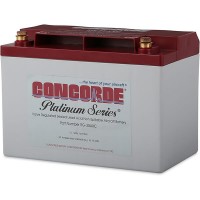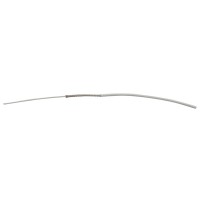1-877-795-2278 | info@aircraftspruce.ca
Aircraft Spruce Canada
Brantford, ON Canada
Corona, CA | Peachtree City, GA
Chicago, IL | Wasilla, AK
Aircraft Spruce Canada
Brantford, ON Canada
Corona, CA | Peachtree City, GA
Chicago, IL | Wasilla, AK
FREE SHIPPING ON ORDERS OVER $699 (SOME EXCLUSIONS APPLY) | 877-795-2278
Optimate TM-281 5 Amp Battery Charger / Maintainer / Power Supply (24-28V Batteries)
$255.95/Each
Part# 11-20330
MFR Model# TM-281
MFR Model# TM-281
Overview
|
The Optimate TM-281 is designed for 24-28V Lithium batteries. This will charge and maintain your lithium battery with 5 amps of energy. This lithium charger also has a “tune” or power source mode of delivering 4 continuous amps of energy so you can program your EFIS or retune your car plus a pushbutton activated BMS “wake up” mode to safely wake up a battery out of sleep mode.
This Optimate Lithium charger will quickly charge your 24V battery, maintain it at the optimal voltage so it is ready to go when you are, but also has a feature of being a power source of 5 continuous amps! For example, you can use it as power supply while programming your aircraft EFIS or supply power to your car while retuning it. |
Features
- Lithium Battery Charger
- Lithium Battery Maintainer
- Power Supply (press TUNE button)
- Ultimate LiFePO4 lithium battery charger. High efficiency diagnostic charger and tester for LiFePO4 / LFP batteries.
- Perfect for charging and seasonal maintenance of a 24V LiFePO4 / LFP lithium battery sized from 2 to 100 Amp-hour.
- SAVE : Low Volt Start of 0.5V + 3-step low volt SAVE and TEST; CHARGING AMPS: 5A (AmpMatic).
- IDEAL FOR: Lithium LiFePO4 (LFP) batteries from 2 – 100Ah; INPUT: Global (100-240V 50-60Hz), high efficiency (CEC listed), fully sealed.
- USE: Indoor / Outdoor (lowest temperature: -40°F / -40°C); STYLE: Weatherproof case with wall mounts, with 6ft / 180cm AC supply lead and 6ft / 180cm charge lead ending in SAE connector; Weatherproof battery lead & standard battery clip set included.
- With 5 Amps of charge current available OptiMate lithium battery chargers unique multi step ampmaticTM program recharges and balances cells within the battery quickly and efficiently.
- OptiMate lithium’s battery maintenance mode delivers current to the vehicle circuitry, protecting and keeping the battery at 100% charge.
Specifications
- Recommended for LiFePO4 batteries: up to 100Ah
- Programme control: ampmatic microprocessor
- Input current max: 0.55A at 230V
- Reverse drain current: less than 0.001A
- Output current (bulk charge): 0.4A – 5.0A
- Charge time limit: 24 hours (maintenance time: unlimited)
- Maintain/test cycles: 30 min/30 min (alternating hourly)
- Charge retention test: Range: 20.2 – 26.6V. GOOD (green) = battery voltage > 26.6V
- Size: 8.2 x 3.1 x 12.1in
- Weight: 3.54lbs
- Enclosure classification: IP54
- Mounting: east direct wall mounting
- Input & output cable lengths: 2m
- Operation temperature range: -40°C – +40°C
- Warranty: 3 years
How It Works
Pre-qualification test: OptiMate Lithium battery charger displays the condition of the battery before charging and measures environment temperature. The ampmatic™ charge program is selected according to temperature and battery condition.Low Volts recovery: The safeTº protection mode controls charging during this sensitive battery SAVE stage, to ensure that an over discharged battery will be correctly and safely recovered. Tests are conducted through-out the SAVE program to determine if the battery has successfully recovered and can advance to BULK CHARGE.
Bulk charge: the ampmatic™ processor actively adjusts charge current to match battery capacity and condition, achieving a complete charge in the shortest time. Progress is tracked against the ideal charge curve for LiFePO4 batteries.
Short-circuited / dead cell check: Charge progress is tracked against the ideal LiFePO4 charge curve, internal damage will be detected and unnecessary charging is prevented of a battery that cannot be recovered.
Absorption and equalization: for 10 minutes the current is delivered in pulses with voltage controlled between 28.0 and28.6V, aiding cell voltage equalization and improving the battery’s overall power delivery.
Charge verification: the voltage is limited at 27.2V while the ampmaticTM processor monitors the current absorbed by the battery. If this reveals a less than optimal charge, the program reverts to absorption for a further 10 minutes.
Voltage retention test: is conducted for 30 minutes during which no charge current is delivered, with 5 possible test results indicating the battery’s general state of health. A green (voltage > 25.4V) result extends the test up to 12 hours, to check for excessive self discharge or higher than expected power loss through the vehicle’s electrical system.
Charge maintenance: The 12 hour MAINTENANCE CHARGE CYCLE consists of 30 minute float charge periods at a voltage of 27.2V followed by and alternating with a 30 minute ‘rest’ (no charge current) periods. During the float charge period current is delivered only if the battery has lost charge due to connected vehicle circuitry. A refresh cycle may be performed if the charge level has dropped significantly. The voltage retention test and maintenance charge cycle will repeat 24 hours after the start of the very first test and continue to repeat for as long as the charger remains connected.
The alternating charge and ‘rest’ maintenance program protects the battery against over discharge by connected vehicle circuitry, making it ideal for indefinite and 100% safe long term maintenance charging.
In The Box
- 1 x TM-281 charger/maintainer/power supply
- 1 x battery alligator clips
- 1 x waterproof quick connect lead with ringlets and SAE connector
Q&A
Please note, Aircraft Spruce Canada's personnel are not certified aircraft mechanics and can only provide general support and ideas, which should not be relied upon or implemented in lieu of consulting an A&P or other qualified technician. Aircraft Spruce Canada assumes no responsibility or liability for any issue or problem which may arise from any repair, modification or other work done from this knowledge base. Any product eligibility information provided here is based on general application guides and we recommend always referring to your specific aircraft parts manual, the parts manufacturer or consulting with a qualified mechanic.
Q: Does the TM281 require periotic calibration?
No the TM281 does not requireperiodic cablibration.

 Aircraft Spruce Canada
Aircraft Spruce Canada






























